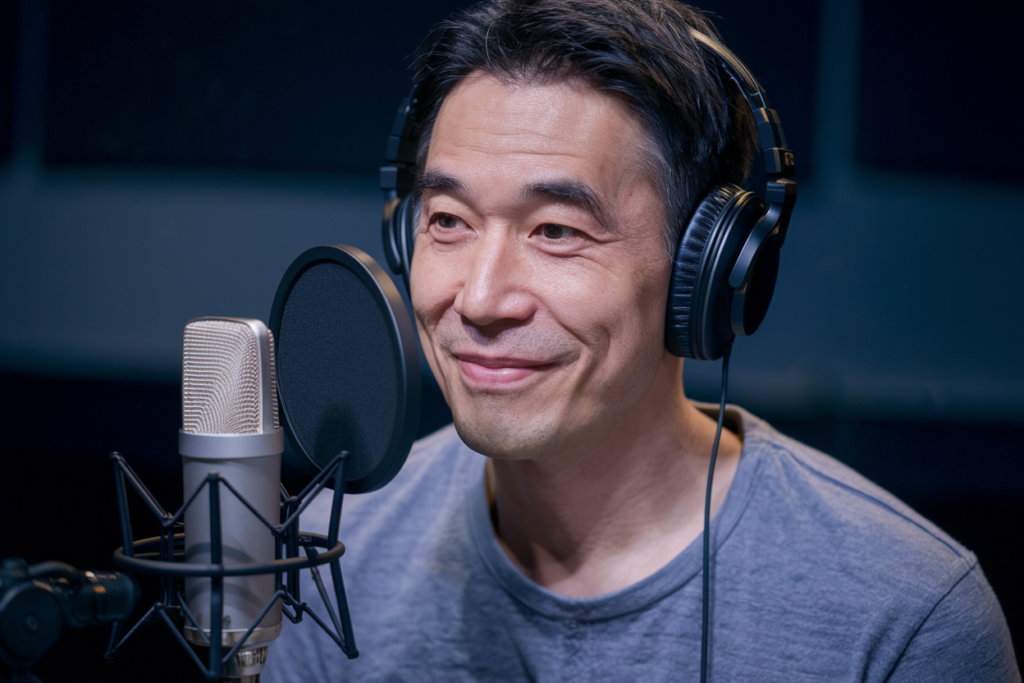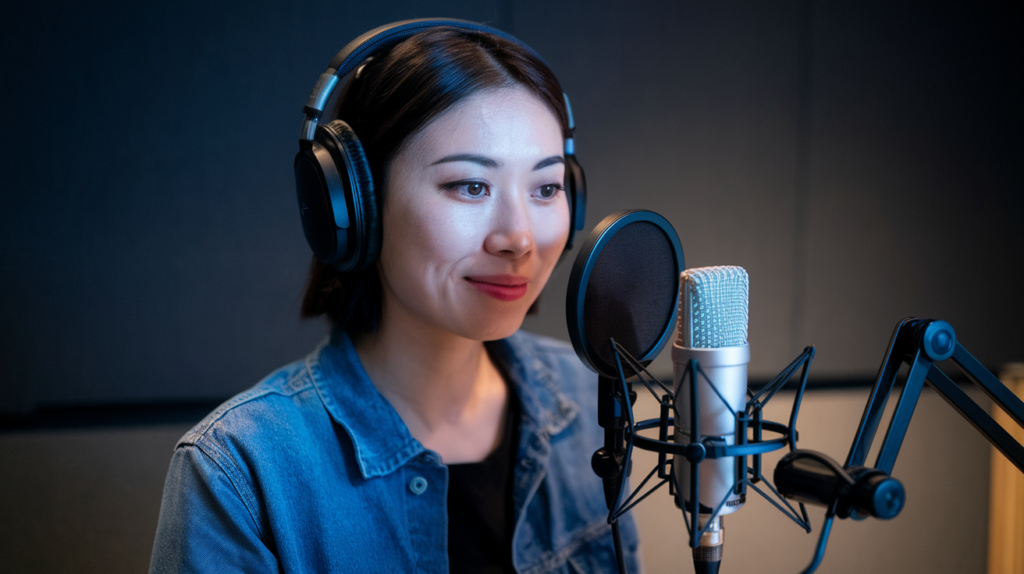Key Takeaways
- Understanding Dialect Differences: Recognizing the contrasts between regional and standard Japanese is essential for effective voiceover projects, influencing audience engagement and message clarity.
- Cultural Relevance: Regional Japanese adds authenticity to projects by incorporating local dialects and cultural nuances, enhancing relatability for targeted demographics.
- Voice Talent Selection: Choosing skilled voice actors experienced in both standard and regional styles is crucial for delivering the desired tone and emotional connection with audiences.
- Audience Reception Variability: Standard Japanese appeals to a broader audience due to its neutrality, while regional accents resonate deeply within specific communities, fostering stronger connections.
- Emerging Trends: The demand for localized content is rising, along with the use of AI in voiceovers; however, authentic human voices remain preferred for their emotional depth and cultural relevance.
- Collaborative Approaches: Increasing collaboration between creative teams and voice talent can enhance project outcomes by ensuring alignment with brand identity and audience expectations.
Ever wondered how voiceover projects in regional Japanese differ from those in standard Japanese? The nuances between these two dialects can make or break your project. Whether you’re aiming for authenticity or broader appeal, understanding these differences is crucial.
Overview of Voiceover Projects
Voiceover projects encompass a range of styles and requirements, particularly when comparing regional Japanese with standard Japanese. Each type brings distinct characteristics that can shape the delivery and impact of your project.
Voiceovers in standard Japanese often target a broad audience, utilizing clear pronunciation and neutral tones. This style suits projects aiming for nationwide appeal, such as commercials or educational materials where clarity is paramount.
On the other hand, regional Japanese voiceovers add authenticity and local flavor to projects. These voiceovers reflect specific cultural nuances and dialects, enhancing relatability for targeted demographics. For instance, using a Kansai accent in advertising could resonate more effectively with audiences from that area.
When selecting voice talent for your project, consider their expertise in both styles. A skilled voice artist can adapt their performance to meet your project’s needs seamlessly. Whether you require a versatile voice actor who can switch between accents or someone with deep roots in a particular region, aligning your choice with the desired outcome proves crucial.
In essence, understanding these differences helps ensure your message connects meaningfully with its intended audience. The right approach not only enhances engagement but also boosts the overall effectiveness of your communication strategy.
Differences Between Regional and Standard Japanese
Understanding the differences between regional and standard Japanese is crucial for effective voiceover projects. Each variant brings unique characteristics that can significantly impact how your message resonates with the audience.
Linguistic Variations
Linguistic variations between regional and standard Japanese are notable. Standard Japanese, often referred to as “hyojungo,” employs clear pronunciation and neutral tones, making it suitable for nationwide campaigns like commercials or educational materials. It uses vocabulary that’s widely recognized across Japan, ensuring broad understanding.
In contrast, regional Japanese incorporates distinctive dialects such as Kansai or Hokkaido. This adds a layer of authenticity and relatability when targeting specific demographics. For example, using a Kansai accent in a local ad not only connects with the audience but also enhances engagement by reflecting their cultural nuances. When selecting voice talents, consider those experienced in these dialects; they can bring an added level of depth to your project.
Cultural Implications
Cultural implications play a significant role in choosing between regional and standard Japanese for voiceovers. Standard Japanese is often seen as formal and professional, ideal for corporate messages where clarity is paramount. However, when aiming to foster a connection with local audiences—such as in promotional activities or community events—regional voices can be more impactful.
Voice actors adept at capturing cultural subtleties can convey emotions that resonate deeply with listeners. They understand local humor, expressions, and social norms that standard voiceovers might miss. This knowledge creates an authentic experience for the audience, enhancing receptivity to your content.
By recognizing these linguistic variations and cultural implications, you set yourself up for success in any voiceover project aimed at engaging specific audiences effectively.
Challenges in Voiceover Projects
Voiceover projects present unique challenges, particularly when navigating the differences between regional and standard Japanese. Understanding these hurdles is crucial for achieving the desired impact.
Regional Dialects
Regional dialects add richness to voiceovers but also introduce complexities. Each dialect carries its own set of pronunciations, vocabulary, and cultural references. For instance, a voice actor delivering a script in Kansai dialect must be well-versed in local nuances and expressions. If not done correctly, misinterpretation can occur, leading to a disconnect with the audience. Selecting voice talent who are native speakers of specific regions ensures authenticity and enhances relatability.
Audience Reception
Audience reception varies significantly between standard Japanese and regional accents. Standard Japanese often appeals to wider demographics due to its neutral tone and clear pronunciation. However, regional dialects resonate powerfully within their communities. When you choose a voice artist familiar with local culture and humor, you foster stronger connections with listeners. Consider how an engaging local accent can elevate your message; it speaks directly to your target audience’s heart. Balancing these elements effectively can enhance overall engagement in any project.
Successful Examples of Voiceover Projects
Voiceover projects showcase the rich diversity of regional and standard Japanese, each offering unique benefits. Here are some compelling case studies highlighting their effectiveness.
Case Studies in Regional Japanese
Regional Japanese voiceovers shine in projects that require cultural resonance. For instance, local commercials featuring a Kansai dialect often elicit stronger emotional responses from audiences familiar with the accent. A campaign for a popular food brand used voice talent skilled in Kansai dialect, enhancing relatability and driving customer engagement by making the message feel personal and authentic.
Another example includes animated series where characters speak in regional accents. This approach captures the essence of specific locales, appealing to viewers’ sense of identity. By employing native speakers as voice actors, these projects not only entertain but also reflect cultural nuances that resonate deeply with fans.
Case Studies in Standard Japanese
Standard Japanese is essential for broader reach and professionalism. Educational materials often utilize this neutral tone to ensure clarity and comprehension across diverse audiences. A notable e-learning platform adopted standard Japanese voiceovers for its courses, allowing learners nationwide to engage without linguistic barriers.
In advertising, companies targeting national markets typically prefer standard Japanese for its formality and universal appeal. An influential automotive brand launched a campaign using standard voice over talent to convey reliability and sophistication—qualities associated with their product line. This strategic choice reinforced brand identity while ensuring consistent messaging across different regions.
By understanding these successful examples, you can better appreciate how selecting the appropriate style impacts audience connection and project effectiveness.
Future Trends in Voiceover Projects
The landscape of voiceover projects is evolving, driven by advancements in technology and changing audience preferences. You’re likely to see a growing demand for regional Japanese voiceovers as businesses recognize the importance of localizing content. As companies seek to connect more deeply with specific demographics, hiring skilled voice artists who understand regional dialects becomes essential.
You might notice an increase in the use of artificial intelligence in voiceovers. While AI can generate voices that mimic human speech, it lacks the emotional nuance that talented voice actors bring to a project. Authenticity remains crucial; listeners often prefer real voices over synthetic ones, especially when cultural connections matter.
Another trend involves expanding platforms for voiceovers. With the rise of streaming services and online content creation, there’s an increasing need for diverse vocal styles to cater to niche markets. This shift means you’ll find more opportunities for both standard and regional Japanese projects across various media types—from video games to educational materials.
Moreover, brands are beginning to emphasize personalization in their marketing strategies. Customized voiceovers that resonate with target audiences help create memorable experiences. By tapping into local expressions or humor through adept voice over talent, brands can foster loyalty among their consumers.
Finally, collaboration between creative teams and voice artists is becoming more common. You may find projects involving workshops where clients and talent brainstorm ideas together. This approach ensures that the final product reflects both brand identity and audience expectations effectively.
Staying ahead in this dynamic environment requires understanding these trends while prioritizing quality craftsmanship from your chosen voice over artist. Embracing these changes can lead to impactful communication strategies that engage listeners meaningfully.
Conclusion
Choosing between regional and standard Japanese for voiceover projects is crucial for connecting with your audience. Each style offers unique advantages that can enhance the effectiveness of your message. While standard Japanese ensures clarity and professionalism, regional Japanese brings cultural richness that resonates deeply with local listeners.
By understanding the nuances of both styles you can tailor your projects to meet specific audience needs. Skilled voice talent who grasp these differences are invaluable assets in creating authentic experiences. As trends evolve it’s clear that embracing regional dialects alongside standard options will be key to fostering engagement in today’s diverse media landscape.
Frequently Asked Questions
What is the difference between regional Japanese and standard Japanese in voiceovers?
Regional Japanese incorporates specific dialects and cultural nuances, making it relatable to local audiences. In contrast, standard Japanese uses clear pronunciation and neutral tones, targeting a broader audience for national projects like commercials or educational materials.
Why is it important to choose the right voice talent for voiceover projects?
Selecting skilled voice talent ensures authenticity in delivery. Voice actors familiar with both regional and standard styles can effectively convey emotions and messages that resonate with listeners, enhancing engagement in the final product.
How do cultural implications affect voiceover choices?
Cultural implications play a significant role; standard Japanese is often viewed as formal and professional, ideal for corporate messages. Regional voices create stronger connections within communities by reflecting local humor and expressions, enhancing relatability.
What challenges arise from using regional dialects in voiceovers?
Regional dialects introduce complexity due to their unique pronunciations, vocabulary, and cultural references. Ensuring authenticity requires selecting native speakers who understand these nuances to connect effectively with their target demographic.
How are trends in technology influencing voiceover projects?
Advancements in technology have increased demand for regional Japanese voiceovers as businesses prioritize localization. There’s also rising interest in artificial intelligence voices; however, authenticity remains essential since audiences prefer real voices over synthetic options.
Can you give examples of successful voiceover projects using different styles?
Yes! Projects featuring Kansai dialects in local commercials show how regional accents elicit stronger emotional responses. Conversely, animated series utilizing standard Japanese demonstrate clarity suitable for educational materials or national advertising campaigns.
What future trends should we expect in the voiceover industry?
Expect growing diversity in vocal styles catering to niche markets due to streaming services’ rise. Personalized marketing strategies will utilize customized voiceovers while collaboration between creative teams and artists enhances brand identity alignment with audience expectations.







